
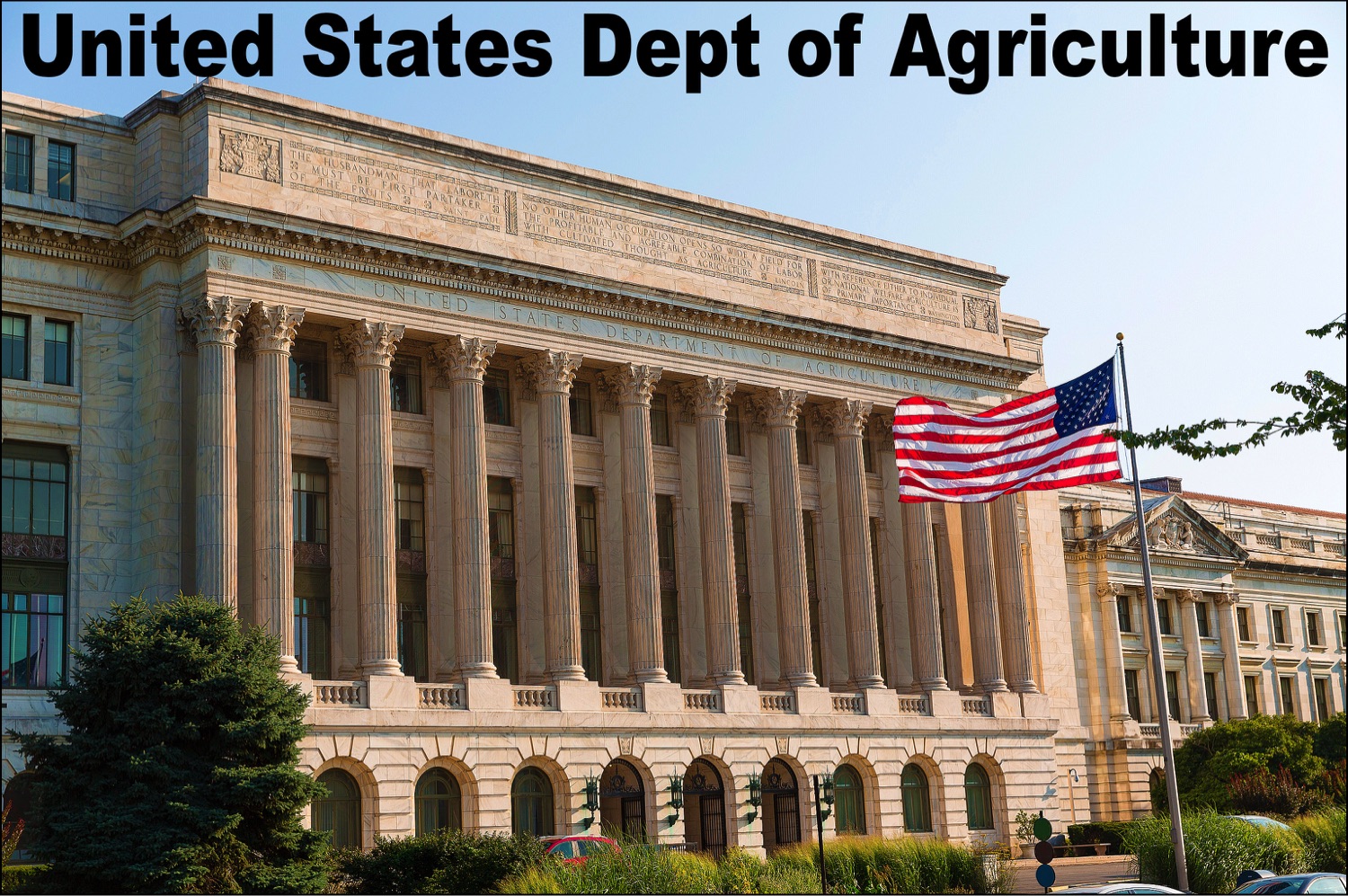
What constitutes Organic food and where does it come from? This brief history of organic farming is a fascinating story that crosses continents under the tutelage of two men, Albert Howard of England and J. I. Rodale of New York. Albert Howard influenced J. I Rodale and is considered by many of the English-speaking world to be the father of modern organic agriculture. However, with his 1887 diploma in Agriculture in hand, Albert started out as the agricultural adviser in charge of an English government research farm in India from 1924-1931. His original aim was to teach Indians how to institute the new industrialized farming methods; but it wasn’t long before he realized that traditional Indian farming practices were superior to what had become conventional agricultural science. One important aspect he took notice of was the connection between healthy soil and the villages' healthy populations, livestock and crops; and he’s quoted as saying: “the health of soil, plant, animal and man is one and indivisible."
J. I. Rodale was a man of many talents, a playwright, editor, author and entrepreneur. Born the son of a grocer, the importance of food was in his bloodline; and not long after discovering the writings of Albert Howard, J. I. Rodale became an advocate of organic agriculture and founded the Rodale Organic Gardening Experimental Farm in 1940. It’s noteworthy to point out that as the Industrialized Green Revolution swept across the world stage, there was already a counter movement burgeoning in Rodale’s Experimental Organic Farm. In 1942, he published his "Organic Farming and Gardening Magazine", which later was named "Organic Gardening". This magazine is the most read gardening periodical worldwide; and we have been subscribers since we first discovered Aquaponics in 2008. To Rodale, agriculture and health were inseparable. He, like his mentor, Albert Howard, believed that healthy soil required compost and the elimination of poisonous pesticides and artificial fertilizers. He believed humans would be healthier if they ate food produced by naturally composted soil without the use of these pesticides and fertilizers.
So exactly what is Organic food? Put quite simply in the Oracle called Wikipedia, “Organic food are foods that are produced using methods that do not involve modern synthetic inputs such as synthetic pesticides and chemical fertilizers. Organic foods are also not processed using irradiation, industrial solvents, or chemical food additives. And interesting enough, for the majority of its history, agriculture can be described as having been Organic. It wasn’t until the arrival of the Industrialized Green Revolution with all of its toxic agricultural buffering brews that the counter, back to nature movement now known as the organic movement was necessary. Again, according to Wikipedia, “Organic food production is a heavily regulated industry, distinct from private gardening. Currently, the European Union, the United States, Canada, Japan and many other countries require producers to obtain special certification in order to market food as O
rganic within their borders.”
So exactly what is required in the “special certification”? A lot. That’s the good news and the bad news. In it’s early days when Organic farmers sold their products direct to the customer through local farmer’s markets, there was no need for certification. The customer could take a trip over to their local Organic farmer’s fields and see what was happening for themselves. Now, because Organic agriculture continues to be the fastest growing sector in the U.S. and the world and many of the Organic products are being sold in chain super markets and health food stores, it’s become necessary to place the authority for verifying the Organic nature of a product into the hands of governing bodies; and once a governing body gets involved in these issues, the red tape starts flying. The Organic food movement is now wrapped in a lot of it. Suffice it to say, requirements vary from country to country; but generally cover a set of production standards for growing, storing, processing, packaging and shipping that include the following:
•no human sewage sludge fertilizer used in cultivation of plants or feed of animals
•avoidance of synthetic chemical inputs not on the National List of Allowed
•and Prohibited Substances (e.g. fertilizer, pesticides, antibiotics, food additives, etc.),
•no genetically modified organisms, irradiation, and the use of sewage sludge;
•use of farmland that has been free from prohibited synthetic chemicals for a
•number of years (often, three or more);
•keeping detailed written production and sales records (audit trail);
•maintaining strict physical separation of organic products from non-certified products;
•undergoing periodic on-site inspections.
In the U.S. a National Organic Standards Board (NOSB) has been established to make recommendations to the NOP (National Organic Program), which in turn reports to the USDA (United States Department of Agriculture) regarding newly revised standards for Organic certification and in May of 2009, that Board decided in a Discussion that:
“Observing the framework of Organic farming based upon it’s foundation of sound management of soil biology and ecology, it becomes clear that systems of crop production that eliminate soil from the system, such as hydroponics or aeroponics, can not be considered as examples of acceptable organic farming practices. Hydroponics, the production of plants in nutrient rich solutions or moist inert material, or aeroponics, a variation in which plant roots are suspended in air and continually misted with nutrient solution, have their place in production agriculture, but certainly cannot be classified as certified organic growing methods due to their exclusion of the soil-plant ecology intrinsic to organic farming systems and USDA/NOP regulations governing them.”
That was the beginning of a fascinating battle that only ended in 2021 in a Court decision. The followig is the run-down on how that battle went:
Between the time the United States Department of Agriculture came up with its proposed regulations for Organic food in 1997 and the time those rules were made law in 2002, hundreds of small, independent organic companies were purchased by the corporate giants. Heinz and it’s affiliate, Hain, bought 19 Organic brands alone. Now Big Food has assumed a powerful role in setting the standards for Organic foods; and these major corporations are dominating the board that sets these standards. If they want to use carrageenan, they’ll use carrageenan. As these Big Food companies started stacking the Board, the list of nonorganic materials approved for Organic foods increased. The "National List" has grown from 77 items in 2002 to 250 nonorganic substances in 2012. Here is a Link to the updated National List as of June 16, 2025. Read it at your own peril.
The 15 member NOSB Board requires a 2/3 majority to add a nonorganic ingredient to the National List. Ammonium nonanoate, a herbicide came frighteningly close to getting on the list in December of 2012. The six votes that almost pulled off this coup came from General Mills, Campbell’s Soup, Organic Valley, Whole Foods Market and Earthbound Farms, which had two votes at the time. Remember those corporate names because they are not friends of Organics. Had it prevailed, it would have been the first time a herbicide was put on the list.
Mark Kastel, director of an advocacy group called Cornucopia Institute agrees with Mr. Potter and says the system has “been neutered”. His Cornucopia Institute wrote a scathing White Paper on the subject of Corporate Influence at the USDA’s National Organic Program after a battle in December of 2011 over the addition of docosahexaenoic acid algae oil (DHA) and arachidonic acid single cell oil (ARA) to the National List. Do we really think that the founders of Organic food, Albert Howard and J. I. Rodale had these kinds of ingredients in mind when they coined the name “Organic”? According to Mr. Potter, his label by Board Members as being a “liberal, immature, radical” ought to be pointed in the Boards’ direction because he’s not the one debating whether or not “organics should use genetically modified additives or nanotechnology, which is what I’d call radical.” It’s clear that Board seats are going to corporate dominated companies and not to independent Organic farmers or even bonafide consumers as some of the seats are designated to do. Katrina Heinz, a General Mills executive was actually appointed to serve as a consumer representative on the board in December 2005 by Mike Johanns, the agriculture secretary at the time. And Ms. Beck, the national Organic program manager at Driscoll’s, to a seat that is, by law, supposed to be occupied by a farmer. How more blatant can seat stacking be?
If these aren’t reasons enough to question what you’re really getting when you buy USDA Certified Organic products, I don’t know what would. Sadly it seems the whole industry, just like the FDA, has been co-opted by the Big Food Corporations. We have to report here, that when we started writing this section of this page, we had no idea we were going to find this kind of corporate corruption in the U.S. organic food industry. Hopefully, the organic food industry in other parts of the world has faired better.
Here’s one consolation. In spite of the 250 ingredient strong National List, we still believe that USDA Certified Organic Food is healthier and safer than the Big Ag pesticide and chemically altered crops. One way to make sure your food isn’t packed with ingredients from the so called approved "National List", ingredients you can’t spell and can’t pronounce is to stay away from packaged and processed foods all together. An organic tomato, at least for now in 2025, is pretty much guaranteed to be just that, a tomato with no additives.
So please forgive us for being the bearers of this bad news about the USDA Certified Organic label. It looks like that label is heading the way of labels a serious Organic eater might want to avoid at least when it comes to packaged and processed foods. We’ll be looking for the Eden Foods Label when it comes to those kinds of foods. We want to leave you with this thought. It’s better to be forewarned and forearmed than to be fooled by what is becoming another Big Food sham.
Go here to read a paper by the Cornucopia Institute entitled “The Organic Watergate--White Paper Connecting the Dots: Corporate Influence at the USDA’s National Organic Program”.
Go here to read the full article, "Has Organic Been Oversized?" from the New York Times about the corporate take over of the NOSB Board.
Go here to read the article entitled, “When Organic Isn’t Really Organic”
Go here to link to the RODALE INSTITUTE.
Go here for a full reading of the ELECTRONIC CODE OF FEDERAL REGULATIONS regarding TITLE 7-Agriculture/PART 205--NATIONAL ORGANIC PROGRAM.
Go here to see many of the 250 approved nonorganic ingredients on the National List.
Go here to read about the dangers of Neotame, the sweetener that like Aspartame is a neurotoxin.
BEWARE
Sweetos


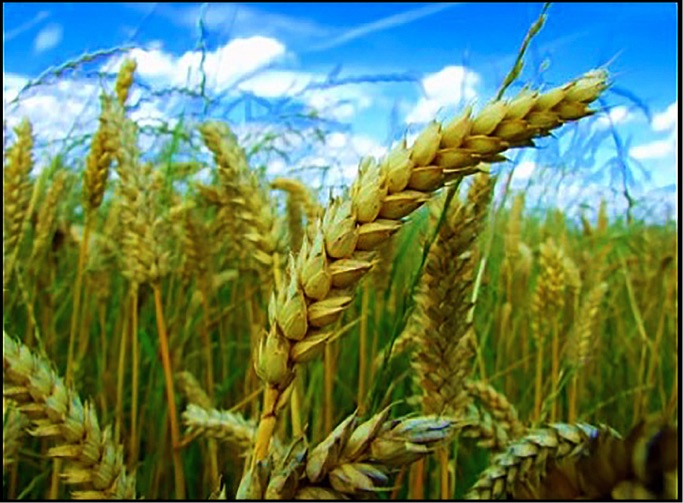
Then there’s the list called the "National List". It is the unholy List of non organic products that are allowed ingredients in Organic products. According to Michael J. Potter (what an apt name when you consider he’s fighting some of the biggest food giants on the planet--the Big Food companies that actually own most of the nation’s Organic food industry), the NOSB Board is stacked with people representing companies like Kellog, PepsiCo, Heinz, Coca-Cola, Cargill, ConAgra, General Mills and Kraft. Big Food has become Big Organic; and as far as Mr. Potter is concerned the USDA Organic label is a complete sham because Big Food has co-opted and completely corrupted the Organic food business.
He’s the owner and President of Eden Foods, which is a major Organic foods producer and wholesaler; and he refuses to put the USDA Certified Organic label on his products. When he showed up at the NOSB Board Meeting in late May, 2012 regarding that list of non organic products that are allowed ingredients in Organic products, he was given three minutes to voice his concerns. He focused on two such ingredients, synthetic inositol, which is manufactured using chemical processes and carrageenan, a seaweed-derived thickener with a somewhat controversial health record. Two days later, the NOSB Board voted to keep carrageenan on the ever growing list of nonorganic ingredients that can be used in products with the coveted USDA Certified Organic label. Upon sleuthing through the internet, it appears that Michael J. Potter is still at the helm of one of the only true organic Food Companies in the U.S., Eden Foods.
Because the giant corporations don’t advertise how much they have encroached into the Organic market, most people have no idea that major Organic brands such as Bear Naked, Wholesome & Hearty, Kashi, Naked Juice, Walnut Acres, Health Valley and Spectrum Organics all belong to the Big Food companies listed above.
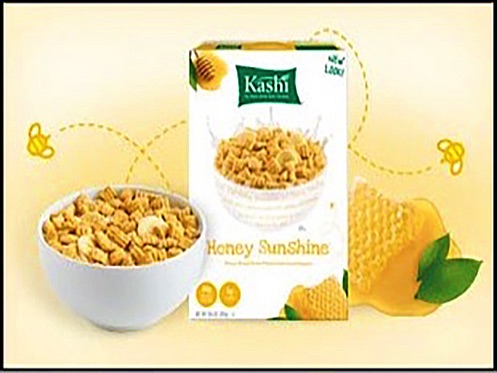

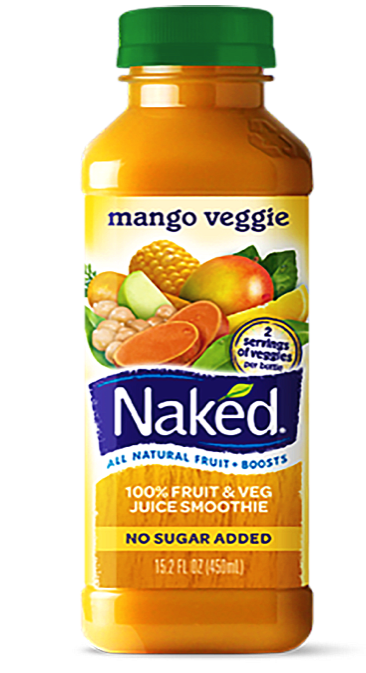
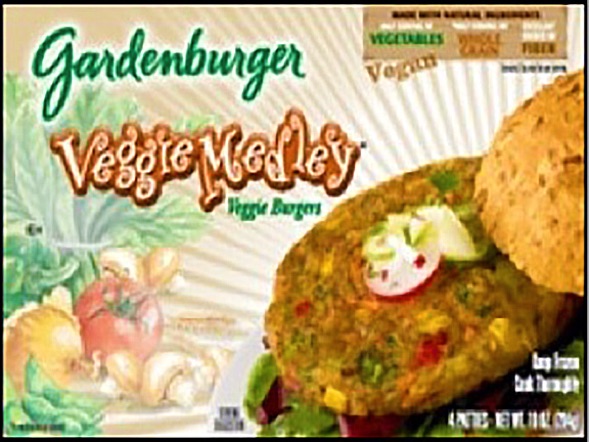
1. "In 2015, the NOP established a Hydroponic/Aquaponic Task Force to prepare a report to the NOSB to provide additional information and industry expertise that may not have been available to the groups in the past. The task force presented an extensive report in 2016 to the NOP and NOSB. To the dismay of many, the report took no definitive stance on the issue, stating that there were options for both certifying hydroponics as organic and withholding the certification."
2. "In the fall 2017 NOSB meeting, motions to prohibit hydroponic, aquaponic and aeroponic systems were discussed and voted on. The NOSB only passed the motion to prohibit aeroponic systems in organic production. The NOSB recommended removing aeroponics as organic while allowing hydroponic and aquaponic systems to remain eligible for certification."
3. "Following the fall 2017 NOSB meeting and discussion on hydroponics, aquaponics and aeroponics, USDA released a clarifying statement regarding the Agency’s position. USDA stated “certification of hydroponic, aquaponic, and aeroponic operations is allowed under the USDA organic regulations, and has been since the National Organic Program began.” USDA also noted the NOSB recommended prohibiting aeroponics and further stated their intent to consider this recommendation. As of November 2020, USDA has not initiated any action on this recommendation."
Then came the Backlash from the Soil Worshipers!
4. "On January 16, 2019 the Center for Food Safety (CFS) filed a petition formally asking USDA to engage in rulemaking to prohibit organic certification of hydroponic operations in response to USDA’s 2018 statement. The petitioners made three claims: (1) because hydroponic operations do not build healthy soils, they are not in compliance with the organic regulations; (2) hydroponics violate OFPA’s consistency requirement because they fail to adhere to OFPA’s soil fertility requirements; and (3) hydroponic operations violate OFPA’s implementing regulations requiring improvement of soil quality, management of soil fertility, use of crop rotation practices, conservation of biodiversity, use of other soil management practices, and use of soil samples to measure compliance with OFPA."
5."In March of 2020, CFS along with a group of organic farmers and stakeholders (Plaintiffs) filed a lawsuit in the Northern District of California which challenges the USDA’s decision to allow hydroponic operations to be certified organic through their 2018 statement and denial of the 2019 CFS petition. The Plaintiffs allege four causes of action all relating to violations of OFPA and the Administrative Procedures Act (APA): (1) the denial of the petition based on an exception for soil-less systems is beyond USDA’s authority and contrary to law; (2) the petition denial is contrary to OFPA’s implementing regulations; (3) the denial of the petition is arbitrary and capricious and contrary to law; and (4) the petition denial results in inconsistent organic standards. CFS has filed for summary judgment with a hearing set for January 21, 2021. Plaintiffs have requested varying forms of relief including: a preliminary and permanent injunction barring USDA from authorizing organic certification to hydroponic operations; declarations affirming their allegations; a mandate that vacates the denial of CFS’s petition; and requiring USDA to promulgate regulations that prohibit organic certification of hydroponic operations."
6."At the October 2020 meeting of the NOSB, hydroponic operations were again discussed briefly. Several public comments addressed concern over the continued certification of organic hydroponic systems. However, again no concrete actions were taken as a result of this discussion. There is a certain hesitancy in attempting to change the Agency stance on hydroponic operations as shown through at least 25 years of inaction on the matter. The CFS lawsuit will be one to watch because it could result in USDA and NOP being forced into rulemaking on the issue. This could affect hydroponic growers in a few ways. If the NOP is required to promulgate a rulemaking action, the proposed rule could immediately suspend the organic certifications for growers, or, as proposed in some NOSB meetings, the organic certificates for hydroponic growers could be gradually phased out. Based on the NOSB’s desire to cause as little market disruption as possible, they would likely recommend phasing out organic certificates for hydroponic growers to the NOP." (See Quotes 1-6 at NationalAgLawCenter.org)
Then came the Court Decision!
7. "In March 2021, the United States District Court for the Northern District issued a ruling in Center for Food Safety's (CFS) lawsuit challenging U.S. Department of Agriculture's (USDA) decision to allow soil-less hydroponic operations to be certified organic by exempting such operations from the requirement that certified organic crop producers build soil fertility. Siding with the government, the Court ruled that USDA's decision to exempt hydroponic operations from the soil fertility requirement mandatory for all soil-based crop producers was permissible because the Organic Foods Production Act did not specifically prohibit hydroponic operations." (See Food Safety News, March 23, 2021)
Hydroponics & Aquaponics WON and can be Certified USDA Organic (for what it's worth)! To be explained below.
The issue around Aeroponics was left in limbo because since November 2020, the USDA has not formally addressed or implemented the National Organic Standards Board's (NOSB) recommendation to prohibit aeroponics from organic certification.

USDA ORGANIC

Few of us think about how regulated our Food System is. This is the building where the Bureaucrats spend countless hours creating the myriad of Food Regulations that are supposed to keep us safe and healthy. Nevermind we are dying sooner and getting sicker every year. One would think that USDA Organic Food is the most regulated and, therefore, healthiest Food in our County. After you read this page, you may change your mind.
Don’t get us wrong. The Organic food movement is one of the best things that has happened on our planet, and right now it’s the healthier choice we have compared to the heavily pesticide sprayed Big Ag crops that dominate the marketplace and the GMO crops that are turning food into poison. But it won’t be long before we have another choice because Aquaponics Farms are springing up all over the U.S., and it’s those farms that will be able to produce Aquaganic™ products.
So let’s take a look at what's actually happening inside the hallowed halls and offices of the United States Department of Agriculture where we'll be paying special attention to the USDA Organic Department.
Isn't it time to rethink what USDA Certified Organic really stands for. Perhaps the only way out of this compromised Food System is to grow our own Food in BioPonic Earth Food Forever Farms. Give us a Call at 760-671-3053. We'll help you get started today.
There isn't a better time to educate ourselves about our Food System than during a time when our new Secretary of Health and Human Services is doing the same thing. Looking closely at our Food System isn't about Politics or how you feel about RFK, Jr. or his Politics. Looking at our Food System is a personal responsibility that every one of us is being challenged to take on.
We need to stop to think about our Food System and what we're eating. The question we all need to be asking ourselves: "Is my Food System Working?" is about to get a resounding "NO"!
This page and the other pages on our Menu above focus on our Food System. They are an enlightening read as we explain the differences between Food grown with Pesticides and Food Grown Organically, with GMO Technology, Hydroponics and Aquaponics.
The final page in this Menu Series introduces our Aquaganic™ Trademark, which redefines pure, organically grown food. This Trademark has been used in the marketplace by our sister company, AquaponicsUSA, to describe food grown using Aquaponics Agri-Tech. The by-line, “Beyond Organic,” describes a Certification that is more demanding than the Organic Certification because “Aquaganic™” products are safer, cleaner and purer than any other products on the market. The following is part of this multi-page explanation of why we are making this claim.
Are you starting to think again about the health and safety of USDA Certified Organics?
Here are a couple of other important Food Issues brought before the NOSB Board. In April, 2012, the Livestock Commttee of that same Board, in a worthy attempt to tighten restrictions on GMO vaccines, admitted that under its present regulations (those in affect on April 3, 2012): “livestock producers use all vaccines and are not required to determine if they are using non-GMO (conventional) or GMO derived vaccines.” In other words, a person could be eating USDA Certified Organic meat that has been given a GMO vaccine. Upon chasing down what has happened regarding this hot subject up to and including 2025, we have discovered the awful truth:
As of mid 2025, the USDA has not definitively prohibited the use of genetically modified organism (GMO) vaccines in the production of USDA Certified Organic meat, despite recommendations from the National Organic Standards Board (NOSB) to restrict such practices. The NOSB, an advisory body to the USDA, has historically expressed concerns about genetically engineered (GE) vaccines in organic production. In 2019, the NOSB considered allowing GE vaccines only when non-GE equivalents are unavailable, a compromise reflecting the board's intent to balance organic principles with practical livestock health needs. However, this recommendation has not been fully adopted into USDA policy, so health conscious Americans who choose and pay more for organic meat could be eating meat that has been vaccinated with GMO vaccines.
It appears that USDA Organic Chickens are a bit more regulated than beef as they align with the NOP’s allowance of synthetic substances for medical treatments (§ 205.603), provided they are not genetically modified unless no non-GE alternatives exist. Certifiers must approve their use, often requiring veterinary documentation of disease prevalence or legal mandates. Apparently the NOSB got this regulation through in regard to chickens even though so far they have failed with beef.
Dare we open the following can of worms? You guessed it! What's happening with mRNA vaccines for livestock? As of mid 2025, the use of mRNA vaccines in USDA-certified livestock, including those labeled as organic, remains a complex and unresolved issue. The USDA's National Organic Program (NOP) does not currently prohibit mRNA vaccines under its organic standards, which allow traditional vaccines to protect livestock health. However, no mRNA vaccines are specifically approved or licensed by the USDA for use in cattle, with the exception of a limited approval for swine (e.g., Merck's SEQUIVITY vaccine, introduced in 2018, for specific diseases like swine flu). Research into mRNA vaccines for cattle and other livestock is ongoing, but none have completed the rigorous USDA and FDA approval process required for widespread use.
Some industry observers and organic advocates, including watchdog groups like OrganicEye, suggest that GE vaccines, including mRNA types, may be used under a "don’t ask, don’t tell" approach by certifiers, especially since mRNA is not classified as genetic modification under current Organic rules. We repeat, "mRNA is not classified as genetic modification under current Organic rules". The absence of a clear ban, combined with industry pressure and incomplete oversight, suggests mRNA vaccines could be used in USDA-certified livestock, including Organic, if approved, though their current use appears limited and undocumented. Without a policy update, the situation remains ambiguous, leaving Organic integrity open to debate.
For a full reading of the 2019 Decision, go to "Formal Recommendation From: National Organic Standards Board (NOSB) To: the National Organic Program (NOP)"
If you actually looked at the Report of the above Meeting, you will see that the Motion by the NOSB Board to only allow GE vaccines on livestock when non GE vaccines are not available actually passed with a resounding "Yes", almost unanimous vote, but the NOSB is only an adisory Board, and the USDA has not incorporated this recommendation into Organic regulations. This stems from the NOP’s lack of rulemaking, broad interpretation of existing vaccine allowances, variable certifier enforcement, the absence of species-specific restrictions, and the evolving mRNA vaccine landscape. As a result, Organic beef producers can use GE vaccines, including potential mRNA types, without adhering to the NOSB’s necessity stipulation, highlighting a gap between advisory intent and regulatory reality. And that is the beurocratic nightmare we are presently experiencing.
Here’s another USDA Organic Certification nightmare. It’s called Neotame; and it’s the poison of choice to replace Aspartame. This neurotoxin has been given the green light by the USDA and isn’t even being listed on ingredient lists, requires no labeling and has been declared safe for USDA Certified Organic products! What?! Neotame has a similar structure to aspartame except that it appears to be even more toxic than it’s found out and exposed relative. But that’s not all. A product called “Sweetos,” which is actually composed of Neotame, is being substituted for molasses in animal feed. As of mid 2025, Neotame, a synthetic sweetener approved by the FDA in 2002 as a general-purpose sweetener and flavor enhancer, was initially reported in sources like Farmwars.info (circa 2010–2011) to be permitted in USDA Certified Organic products without labeling requirements, raising significant concerns about transparency and safety. However, a critical examination of the available evidence and regulatory context reveals a more complex picture.
The FDA deems neotame safe based on over 110 studies assessing its toxicity, establishing an acceptable daily intake (ADI) of 0.3 mg per kg of body weight. The Center for Science in the Public Interest (CSPI) ranks it as safe, and it is approved for use in various foods except meat and poultry, with no specific prohibition in organic contexts.
Sources from 2010–2011 (e.g., Farmwars.info, One Radio Network) alleged neotame’s neurotoxic and immunotoxic potential, likening it to aspartame and citing its formaldehyde metabolite. These claims, sourced from sites like Holisticmed.com, lack peer-reviewed validation and are not supported by FDA or USDA data, which found no significant accumulation or toxicity in animal studies. Neotame is not officially considered safe or unsafe for USDA Certified Organic products because it is not listed on the National List, and no evidence supports its current use in organic certification. The 2010–2011 allegations of its inclusion lack substantiation from USDA records and seem to be outdated misinformation. So what the heck is this "National List" anyway?